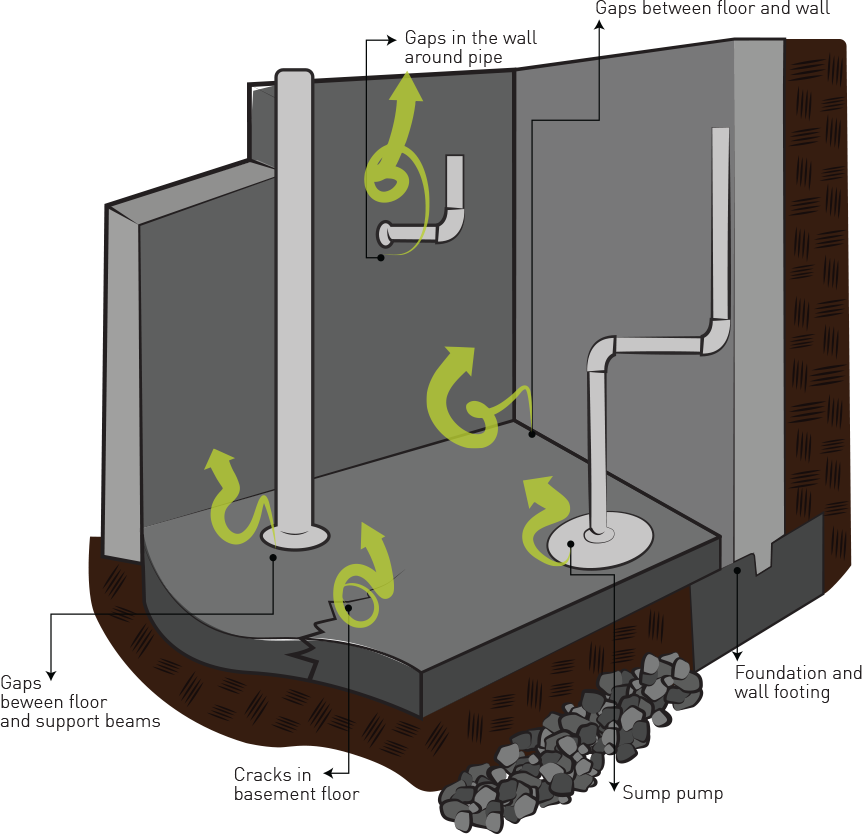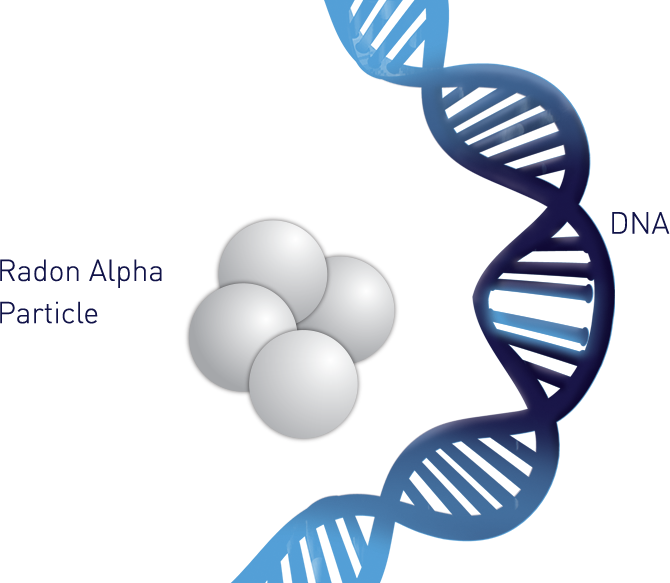What is Radon?
 Radon Enters Your Home through the Basement
Radon Enters Your Home through the Basement
Radon is a colorless, odorless radioactive gas. It is the naturally-occurring byproduct of uranium, and is found throughout the world, wherever traces of uranium exist underground. Radon, or Rn, is pulled from the ground into your home due to the effects of negative pressure, meaning air pressure inside your home is lower than outside.
The radioactive gas molecules attach themselves to dust particles in the air, which are inhaled. Because radon has no immediately detectable symptoms, you’ll never know you have a problem until it’s too late.
What are the Effects of Radon Exposure?
Radon is the second-leading cause of lung cancer in the United States and the number 1 cause of lung cancer among non-smokers. Some estimates by the EPA and Surgeon General’s office say more than 20,000 Americans die every year because of lung cancer caused directly by radon exposure.
In 2009, the World Health Organization called radon a global threat to home health, saying most radon-related cancer development comes from low to moderate exposure over time.
When Rn gas is inhaled, it gets deposited in the lungs where it releases dangerous radiation, creating free radicals and damaging DNA, leading to the growth of cancer cells.
Radon entered the national consciousness in 1984 when a nuclear engineer in Pennsylvania named Stanley Watras was sent home from work for bringing too much radiation in to the nuclear power plant. When health physicists examined his home, they found high concentrations of radon.
On average, radon is responsible for hundreds of times more background radiation in homes than nuclear power plants. People who lived near the Three Mile Island nuclear plant in 1979 were exposed to more radiation from radon in their homes each day than they were when one of the plant’s nuclear reactors went into meltdown.
 Smokers Face Bigger Consequences from Radon Exposure
Smokers Face Bigger Consequences from Radon Exposure
Smoking remains far-and-away the top cause of lung cancer, leading to more than 160,000 cancer deaths per year. It’s believed radon exposure can accelerate the chances of cancer development in smokers, as the Rn gas will easily attach itself to smoke particles, and deposit themselves deep within the respiratory system.
Depending on the level of radon exposure, the risk of smokers developing radon-related lung cancer multiples by 50% to 700% over non-smokers.
Quitting smoking is the best way to prevent lung cancer for you or your loved ones, and that is especially true for people who have been exposed to high levels of radon. The second best way is to call Lifetime Radon Solutions and schedule your radon testing appointment today.
Milwaukee Radon Gas Mitigation Services
While radon exposure is a global threat to household health and safety, the likelihood of elevated radon levels occurring in your home can be higher or lower depending where you live.
The EPA says every county in Wisconsin is at “moderate” or “high” risk of radon exposure.
The Wisconsin Department of Health Services has gone a step further and broken the numbers down by ZIP code. The DHS estimates homes throughout most of Southeastern Wisconsin are at risk of having elevated levels of radon on the main floor, with the risk accelerating to as high as 60% in areas of Waukesha County, Washington County and Dodge County.
The only way to know for sure if your house exceeds the EPA’s danger limit for radon exposure is through radon testing. Lifetime Radon Solutions is the top provider of radon testing and mitigation services in Milwaukee, Waukesha, west to Madison, south to Kenosha, and North to Sheboygan. If you have a radon problem, we have the radon solution.
You wouldn’t live with a nuclear reactor in your basement. Why would you live with elevated levels of radon in your home?
To schedule a radon level test for your home or business, contact the radon mitigation experts today.
 262-955-5701
262-955-5701




